"Green Men". Phenomenon One, or Moscow invented them (h. 2)
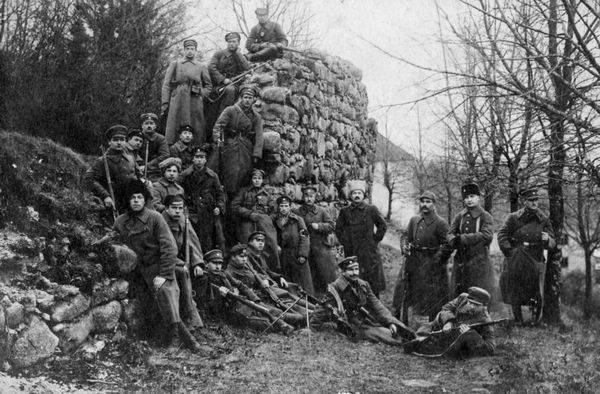
At the beginning of 1920, the idea of a tactical alliance between Lithuania and Soviet Russia emerged, which had a common enemy - Poland. March 31. The Lithuanian government proposed the Soviet government to conclude a military alliance against Poland. The negotiations that began in Moscow on May 9 ended on July 12 by signing a peace treaty between the two countries. Under this agreement, the Vilensk region returned to Lithuania, the latter also received irrevocable assistance in the amount of 3 million rubles in gold, and the Lithuanian army began military operations against the Polish troops. (website: Documents of 20 century. Soviet-Lithuanian treaty of 1920 of the year, 12 of July).
In this situation, Lithuania needed an ally in the war with the Poles, and Soviet Russia wanted to secure its right flank during the battles with the same Poles. The agreement also provided for the outline of the borders, and the division of the Vilnius region itself. The Reds declared that they would be satisfied with Vileika and Disna districts, as well as with part of Lida and Oshmyany. The agreement provided for the possibility for the Red Army to conduct operations on “The territories that are under this treaty are the territories of the Lithuanian state, provided that after the completion of the military-strategic necessity, the Russian troops will be withdrawn from the indicated territories” (see M. Mankiewicz, Lithuania and the USSR in 1920 interaction: controversial issues .
14 July 1920 15. The cavalry brigade 3 of the Red Army Cavalry Corps captured Vilna. The next day a hussar regiment arrived here, the 7 and 8 regiments from the 1 division of the Lithuanian army, but the Bolsheviks were not in a hurry to give them the city, but on the contrary - Lithuanian units were withdrawn from the city. Only on August 6, when the Red Army was rapidly approaching Warsaw, a convention was signed to evacuate Red Army units from the Vilna region, Lithuania received the Sventsyan and Vilna regions.
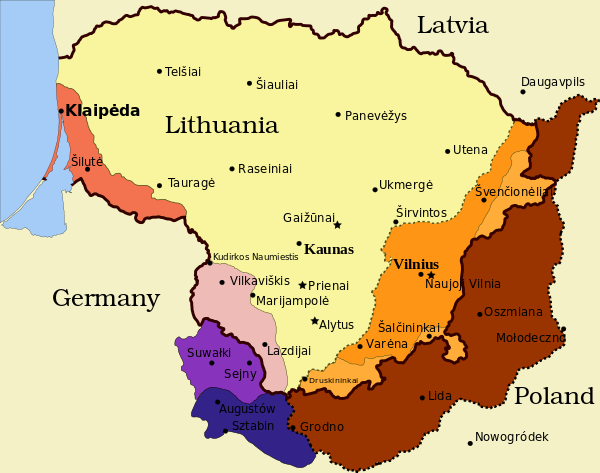
But in fact, the Red Army left Vilnius only on August 25, when, after the unsuccessful Warsaw battle of August 12 - 16, it began a retreat to the east. 26 August Lithuanian units entered the city. The Lithuanians hoped that the Poles, passionate about the pursuit of the Red Army, would not enter into a new conflict and leave Vilno alone. Moreover, even on July 10, under pressure from Britain, Poland recognized Lithuania’s right to this city. Such behavior of the British, naturally, angered the Poles, who considered these territories their own. Thus, the Cracow newspaper “Hour” informed the readers that 1 million 240 thousand people live in central Lithuania, of which Poles are 810 thousand, Jews are 190 thousand, and Lithuanians are 115 thousand. (Gomenyuk I. Forerunners of the Second World ...). It is interesting to note here that the guidance of data on central Lithuania (in the understanding of the historical region, and not part of the relevant state) created the desired effect for the Polish public regarding the dominance of the Polish nation in the respective territories. Although, in general, in the Vilna province, according to the 1897 census, Belarusians prevailed - they numbered 56,1%, and in the Vilna itself Jews prevailed - up to 40%. But the Poles did not bother, and they confidently falsified the numbers.
At the same time, there were different concepts of introducing Vilnius to Poland: the right-wing national democrats believed that this land should simply become part of the Polish state, while the center-left parties and Piłsudski himself reflected on the possibility of a federative structure, which would take into account the ambitions of Lithuanians, Belarusians and Ukrainians . But Vilna, with the meager number of ethnic Lithuanians in it and the special attitude of the Poles towards it, became a problem. The Poles were not ready to refuse him, and without him it was impossible to persuade the Lithuanians to union or federal relations.
In fact, everything happened more prosaically. On August 28, units of the 1 Division of the Polish Army near Avgustov disarmed Lithuanian border guards. The 2 Lithuanian infantry division 2 September 1920 counterattack in order to recapture the city failed and the Lithuanians had to retreat. 22 September The 1-Polish division inflicted another defeat on the Lithuanian forces, although it did not defeat them completely. On September 26, the Poles knocked out units of the Red Army from Grodno, and 28 numbers occupied Lida. In order to prevent further clashes under pressure from the League of Nations military control commission, Polish-Lithuanian negotiations were launched, which started on September 30 on 1929 in Suwalki. On October 7, an agreement was signed that provided for the cessation of hostilities, the exchange of prisoners and the demarcation line demarcating the Lithuanian and Polish territories in such a way that most of the Vilna region was under Lithuanian control. It is clear that Warsaw was counting on a completely different result.
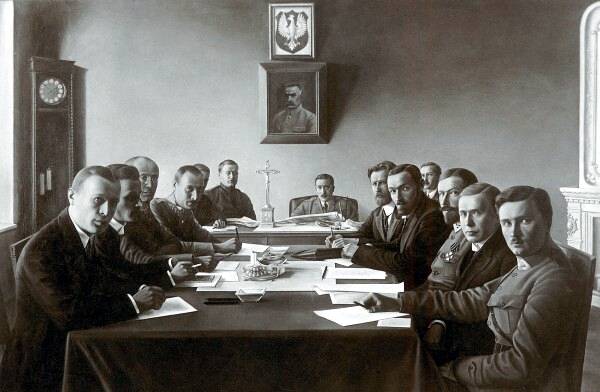
The terms of the agreement, signed under the pressure of the League of Nations, could not satisfy Y. Pilsudski, who believed that Vilna and the Roman Catholic lands in the Vilna region should have moved to Poland. The contract tied the Polish Republic hands. Therefore, Pilsudski developed the following plan, which called for the proclamation of a “popular uprising” by local Poles, who should beat to take control of the region and prevent its capture by Lithuanian troops.
In addition to ideological reasoning and banal nostalgia for native places, Pilsudski was also guided by strategic reasons: a strong and powerful Lithuania could become a transit bridge between Germany and Soviet Russia. And these two states at that time were the main opponents for Warsaw. The impossibility of a direct attack on Vilna was primarily due to Poland’s international obligations and pressure from the UK, which opposed such a move.
Help.
Officially agreeing to give permission to the "Vilna Question" at the mercy of the League of Nations and having assumed obligations not to cross the demarcation line, Poland lost the legal opportunity to occupy Vilna province with its troops. But this did not mean that the Head of State refused views of the Vilnius. If Poland cannot annex the territory to itself, then why not an "independent" state arise here? The population of the region (especially the southeastern part) consisted mainly of Catholic Belarusians and Poles. So why not rebel against their land being annexed to Lithuania?
However, it is too vague and too long to count on an independent upsurge of the nationalist movement or to organize it. And not the fact that the population "led" to it. And it was necessary to solve the issue urgently, until the territory was finally recognized for Lithuania. The uprising needed combat-ready armed units. And, immediately, and "in commercial quantities" to quickly take possession of the territory. And then be able to hold. And where to get them? And right in the Polish army - as the armed forces of the new state, it was decided to allocate the 1-th Lithuanian-Belarusian infantry division. Moreover, it was equipped with just the right contingent.
It is also interesting to note such a moment. Even before the signing of the 29 Treaty of Suwalki on September 1920, an order was issued by the High Command of the Polish Army to regroup in the northeast direction the 41 of the Suvalki Infantry Regiment and the 4 Cavalry Brigade, which were to dismantle the Lithuanian troops from the Suvalki district. There were also units that were now considered “irregular”: the 212 and 211 regiments of the uhlans, the Voluntary Division, and the 1-I Lithuanian-Belarusian division. The order noted that the division of parts into regular and irregular is due to difficulties of a political nature tied to further activities abroad (Gomenyuk I. Forerunners of the Second World ...).
From this we can conclude that already in September, Pilsudski was planning an operation to capture Vilna under the sauce of the "rebellion" of a certain part of the Polish army.
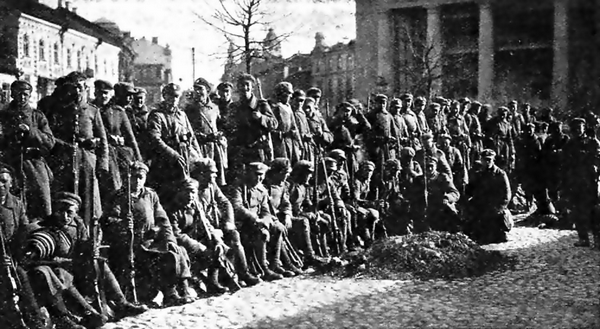
The strike force of the “spontaneous popular uprising” was supposed to be the formations of the regular Polish army - the 1-I and 2-I Lithuanian-Belarusian infantry divisions. They were formed on October 21 1919 based on the 1-th division of the same name, which in turn was formed in accordance with the order of Y. Pilsudski from November 16 1918 mainly from residents of the former Lithuanian and Belarusian provinces of the Russian Empire (І. Gomenyuk Provisniki drugoi svitovo ї…). Each division had an artillery regiment and two brigades of two infantry regiments. The new 1 division also included one cavalry regiment - the Grodno Uhlan regiment. Both units already had a certain combat experience, and their losses during the summer battles were compensated at the expense of other parts of the Polish Army. General Zeligovsky was appointed to the role of the main rebel, who also became the commander of the 1 Lithuanian-Belarusian division. "I chose for this general Zeligovsky, - wrote Pilsudski years later, - since I myself, the head of state and supreme commander of Poland, could not violate obligations. I chose a general in whom I was most confident that by his strength of character he would be able to keep up to the proper level and that he would not have orders and demands of the government, just like my orders and demands, to contradict the works of the military ” (Y. Pilsudski. 24 August 1923 are given according to Tomassini F. Odrodzenie Polski. Warszawa. 1928.).
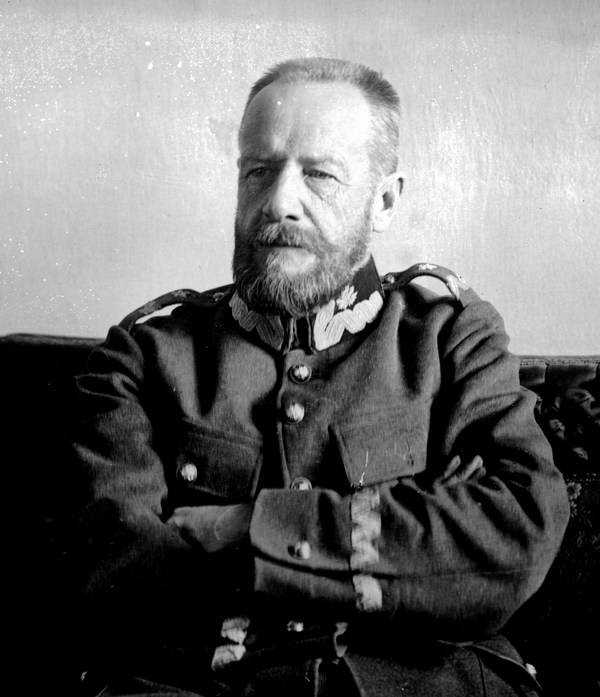
Help.
Lucian Zeligovsky was born 17.10.1865 in a farm. Transitions of the Oshmyany povet of the Vilna province, in the family of the participant in the 1863 uprising of Gustav Zeligovsky.
After graduating from military school with 1885, he served in the Russian army. Participated in the Russian-Japanese war 1904 — 1905. During the First World War, the rank of colonel commanded an infantry regiment. After the February Revolution became one of the organizers of the Polish national parts in Russia. He commanded a brigade in the 1-m Polish Corps, in 1918, he created Polish units in the Kuban. In April, 1919, through Odessa and Bessarabia, returned to Poland at the head of the 4 division of Polish riflemen.
In the Polish army, he first became commander of the Lithuanian-Belarusian front, then the operational group and commander of the 10 Infantry Division (1919) during the Soviet-Polish war. From October 1920, the commander of the 1 of the Lithuanian-Belarusian division. With the tacit sanction of Yu. Pilsudski, on the orders of L. Zheligovsky, the troops of the 1 of the Lithuanian-Belarusian division, which formally came out of obedience to the Polish command, occupied Vilna (October 9) and part of Southeast Lithuania. In the occupied territories, an independent state was formed, formally independent of Poland - Middle Lithuania. After the inclusion of Central Lithuania in Poland (1920), the inspector of the army in Warsaw (1922 — 1921), then the Minister of War (1925 — 1925). Ensured the implementation of the May coup 1926 in Poland, which established the Pilsudski authoritarian regime. The 1926 has retired. In 1927 published the book “Wojna w roku 1930. Wspomnienia i rozważania "(" The war in the 1920 year. Memories and reflections "). In 1920, he was elected to the Sejm and remained a member of the Polish parliament until 1935.
With the onset of German aggression, 1939 attempted to volunteer for military service, but was not accepted due to old age. Being a civilian, he took part in the command of the Southern Front. I went to France, to 1940 - to the UK. He was a member of the Polish government in exile (Polish. Rada Narodowa Rzeczpospolitej). At the end of the Second World War, announced his intention to return to Poland. In preparation for his departure, he died in London 09.07.1947. Under the will, the ashes were brought to Warsaw and buried in the Powazki military cemetery. Transportation organized by Brigadier General Stanislav Tatars.
20 September 1920 the High Command of the Polish Army summoned Zheligovsky to the Main Apartment, which was located in the city of Bialystok. The general arrived there only on September 30, and on October 1 he had already met with Pilsudski on the latter’s personal train. Marshal Pilsudski stated that it is in the interests of Poland to raise a local uprising in Vilna, which in turn will make Western diplomats understand that the city is populated by Poles who cannot and do not want to be under Lithuanian or Soviet power. Zheligovsky, after some deliberation, agreed to perform this task, though - as he recalls: “I wanted to find out if there is any other possibility to select Vilna. It was said that there is no such possibility. If we do not borrow, it will perish for us forever ”(Akcja gen. Żeligowskiego).
Next, Marshal Zeligovskiy introduced the plan: the 1-I Lithuanian-Belarusian division, which the general himself will lead on October 2, must raise a “insurrection”, reach Vilnius with a forced march, seize the city, take control of the nearby lands and declare an “independent state” Central Lithuania . The political and military leadership of Poland will publicly withdraw from these events, so Zeligovsky will have to act at his own discretion. Pilsudski warned the general: “There may come a moment that you will be against yourself not only the opinion of the world, but also of Poland. Such a moment may come that even I will be forced to go against you. I'll have to take it all on myself. That I can not order. Such things do not order. But I appeal to your goodwill and to you as a Vilnius ”.. Further, Piłsudski added that no one - neither the Entente with the League of Nations, nor the Polish government and society understand the business with Lithuania. Everyone wants only peace, and no one does Vilna. And ending the meeting, he said: “If we do not save Vilna now, then historians will not forgive us for this” (Akcja gen. Żeligowskiego).
General Zeligovsky took some time to think. Of course, he trusted his Marshal, but he was not sure about the success of the operation, having only fifteen hundred soldiers at his disposal (Pilsudski, in order not to annoy the Entente, didn’t want to single out “volunteers” anymore). The conversation continued the next day. Zeligovsky managed to convince Pilsudski to slightly correct the plan: in addition to the 1 Lithuanian-Belarusian Division, soldiers born in the 22 Infantry Division, the so-called Zyndram Group, under the command of Major Marian Zyndram-Koschyalkovsky, had to take part in the operation. After that, a council with the participation of Vilnius Poles was held in Grodno, where they approved a decision that Lithuania would join Poland as a federation and approved the creation of a free administration in Vilna after the successful eligowski action. For the political side of the implementation of the Vilnius operation, Colonel Leon Bobitsky was in charge, but the personal representative and confidant of the Head of State (i.e. Pilsudski), captain Alexander Pristor, had a much greater influence. Plans were made to create a government substitute called the Provisional Government Commission. The occupied territories were supposed to be called the Middle (Central) Lithuania, which indicated that a federal solution was possible.
Help.
The formation of Middle Lithuania was the result of the interaction of the federalist concept of Jozef Pilsudski with the military and political realities of 1918 — 1920. According to Pilsudski, the Polish, Lithuanian, Belarusian and Ukrainian states that had arisen on the ruins of the Russian, German and Austrian empires were to form a federation reproducing the Polish-Lithuanian Commonwealth of the past centuries. However, de facto, the idea of national statehood prevailed in Poland, Lithuania and neighboring countries by the end of the First World War. But no matter what, Pilsudski (himself a native of Vilna province) sought to create a Lithuanian federation allied with Poland - in the project: 1 of Lithuania Western (Litwa Zachodnia) or Lithuania Kovno (on the basis of the former Kovno province), 2) of Lithuania Middle (Litwa) Środkowa), 3) Lithuania Eastern (Litwa Wschodnia, with its capital in Novogrudok).
A kind of modification of this idea was the later “Himans plan” - the plan for the settlement of the Polish-Lithuanian conflict put forward by Belgian diplomat Paul Himans in spring 1921, which envisages the creation of a state consisting of two cantons with centers in Vilna and Kovno. Practically only Litwa Środkowa was implemented.
October 6 general spent fees with senior officers, where he explained the purpose of his further actions. But when on the morning of October 7 about the "rebellion" was reported to the other officers, some of them refused to take part in such an action and submit to Zeligovsky. Only the decisive intervention of General Sikorsky, commander of 3 Army, pacified these unrest. However, the most ardent opponents were quickly sent in units of the regular army. But the overwhelming majority of the soldiers enthusiastically welcomed the march on Vilna.
At a time when the troops of General Zeligovsky were preparing to start the operation, a Polish-Lithuanian agreement was signed in Suwalki on October 7, which determined the demarcation line "between the Polish and Lithuanian armies, which in no way predetermines the territorial rights of any of the contracting parties" . Poland received Suwalki, Augustow and Sejny, and Lithuania - the rest of the disputed territories, including Vilna.
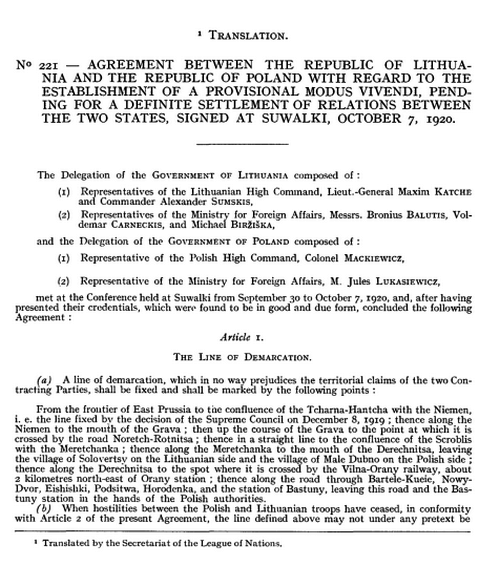
Help.
The agreement was finally signed on 7 on October 1920 of the year; The cease-fire was supposed to begin at noon on October 10. It is noteworthy that the agreement does not contain any references to Vilnius or the Vilnius region.
The agreement contained the following articles:
Terms of agreement
Article I: on the demarcation line; he also stated that the line “in no way affects the territorial claims of the two Contracting Parties”. The demarcation line will begin in the west after the Curzon Line, until it reaches the Neman River. He followed the rivers Neman and Merkis, leaving the city of Varein to the Lithuanians, but its railway station is on the Polish side. From Varėna, the line will follow Bartelyay-Kinchai-Naujavaris-Eishishkes-Bastuni (Bastunay, Bastyn). The railway station in Bastuni also remained in Polish hands. The demarcation line to the east of Bastuni should be determined by a separate agreement.
Article II: on a cease-fire; in particular, the cease-fire should have taken place only along the demarcation line, and not on the entire Polish-Lithuanian front line (that is, not to the east of Bastuna).
Article III: at the railway station in Waren (Orani); he had to remain under Polish control, but the Polish side promised unrestricted passage of civilian trains, but only two military trains per day
Article IV: on the exchange of prisoners.
Article V: about the date and time of the beginning of the cease-fire (October 10 at noon) and expires (when all territorial disputes are resolved) and which card should be used
The above contract was to enter into force on 12 hours of the day 10 October 1920 G. Therefore, it was impossible to delay.
Information